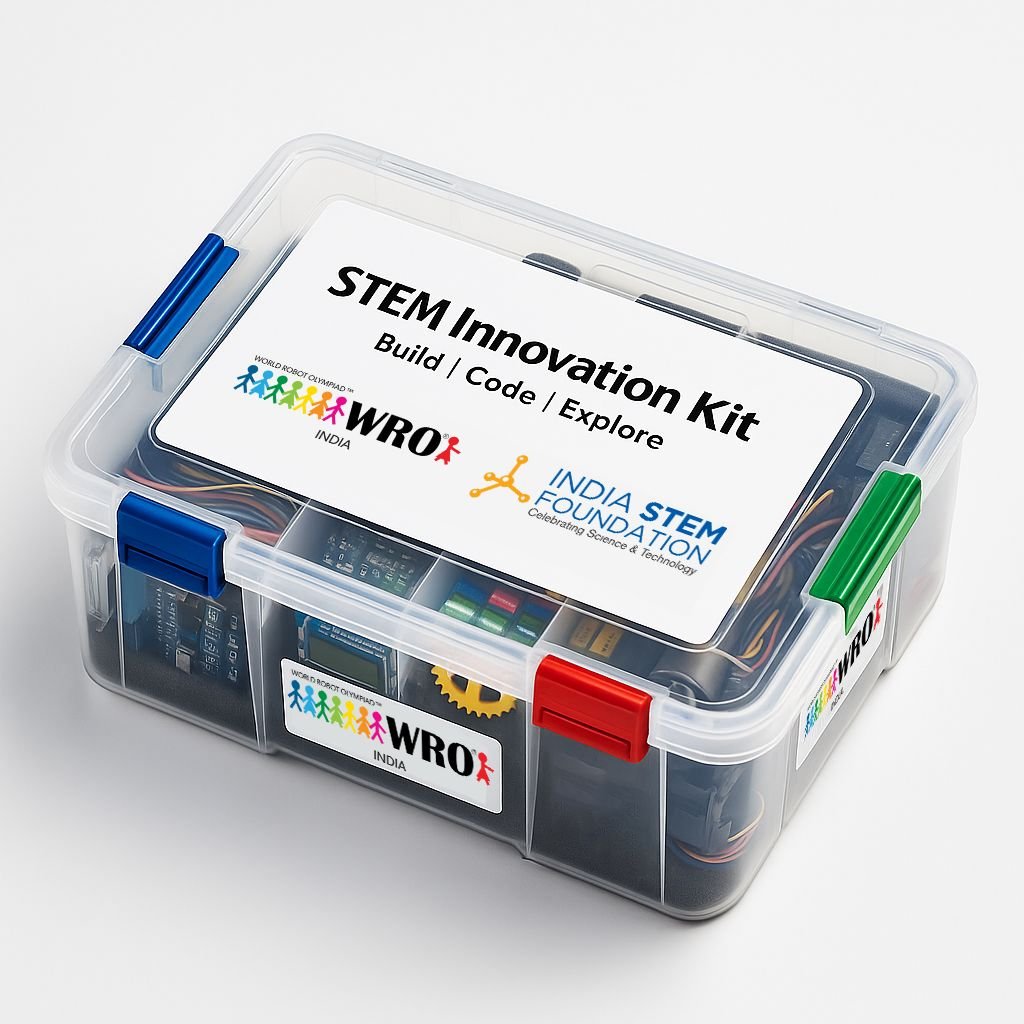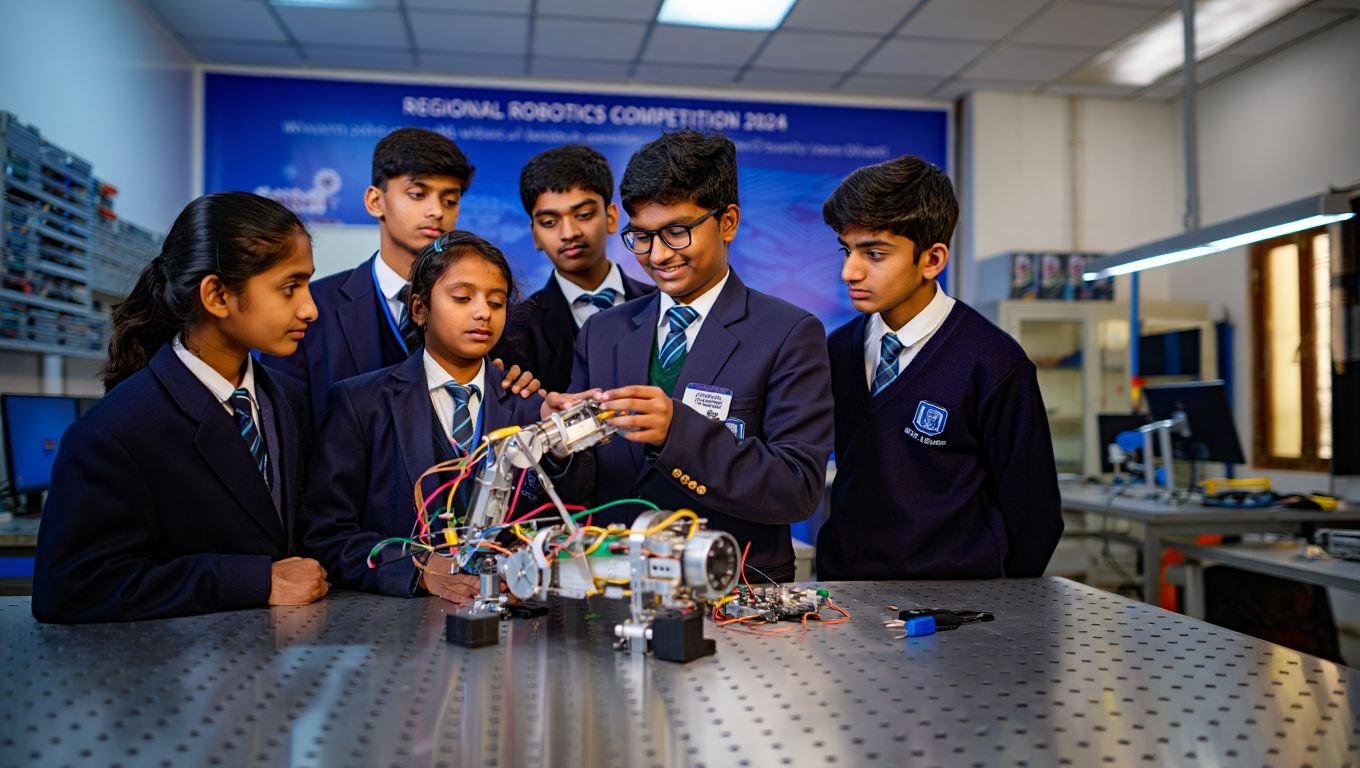The following article was featured in India CSR publication:
In the modern world, STEM fields—science, technology, engineering, and mathematics—have grown in importance. It responds to the urgent need for highly skilled labor in industries vital to innovation, development, and technological advancement. Pupils with a STEM education are more capable of managing difficult circumstances, staying current with technology, and advancing society. Today, with technology advancing at a rapid pace, STEM education is crucial. It helps students develop their critical thinking skills, which motivates them to investigate, evaluate, and resolve real-world issues. Furthermore, STEM fosters traits like creativity, adaptability, and teamwork—all of which are critical in today’s globally linked and competitive labor market.
Corporate social responsibility, or CSR, has developed into a significant global force for good. Education is one of the main sectors in which CSR efforts have had a long-lasting effect.CSR education initiatives, motivated by a feeling of duty and dedication to society, are revolutionizing the educational scene by providing fair access to education and empowering those who most need it to acquire knowledge and skills. This article looks at the value of CSR education initiatives and how they help create a better future.
How STEM is Evolving Education
It first helps to build critical thinking, creativity, and problem-solving skills at a young age. This essential learning experience lays the foundation for future career and academic endeavors.Second, by engaging in STEM education, children may discover the wonders of science, technology, engineering, and maths in an engaging and interactive way. This sparks curiosity, encourages experimentation, and facilitates discoveries, all of which broaden our understanding of how the world functions. Children who are exposed to STEM courses grow more resilient and adaptable, which better equips them for a workforce that is always evolving as a result of technological advancements. Additionally, instructors play a critical role in ensuring that students are skilled in these vital subjects and in helping them grow and improve their STEM talents.
STEM education for Future: The Future is Here
Empowerment via Education: STEM initiatives prioritize education as the cornerstone of their work. They constantly effortlessly enhance STEM education in schools, universities, and other institutions. This entails updating the curriculum, improving instruction, and providing teachers with professional growth opportunities. Giving educators access to the most recent data and resources will enable them to share their passion for STEM subjects with their students effectively.
Access and Inclusivity: These courses acknowledge that everyone should have access to STEM education, irrespective of gender, socioeconomic status, or place of residence. They aggressively promote diversity by taking down obstacles to involvement. Increasing the number of STEM enthusiasts means providing underrepresented groups with resources, scholarships, and mentorship programs.
Encouraging Research and Innovation: STEM programs acknowledge that the cornerstones of growth are innovation and research. They heavily emphasize experiential learning, critical thinking, and creative thinking while utilizing various crucial strategies to foster an innovative culture.
Practical Experience: STEM courses strongly encourage practical experience. This involves providing researchers and students access to state-of-the-art facilities, tools, and technology. Practical experimentation may give valuable insights into engineering concepts and scientific issues. Students gain knowledge not just from textbooks but also by actively engaging with their study materials and tasks.
Creative Thinking: Creative thinking typically leads to innovation. In an environment fostered by STEM endeavors, people are encouraged to think creatively and beyond the box. They help with assignments and projects that call for creative problem-solving. STEM fosters creativity and produces ground-breaking innovations by challenging people to see challenges from fresh angles.
Critical Thinking: Critical thinking is another cornerstone of creativity and research. The ability to think critically and analytically is highly valued in STEM courses. We teach researchers and students to examine evidence, question presumptions, and form reliable conclusions. It takes this mentality to study and develop original answers to difficult problems thoroughly.
Mentoring and advising: STEM initiatives often pair aspiring researchers and students with knowledgeable mentors. These mentors offer guidance, impart information, and provide crucial insights. Mentorship schemes foster innovation and give prospective innovators a haven.
Corporate social responsibility
Corporate social responsibility, or CSR, is essentially a company’s pledge to further society on top of its primary commercial endeavors. Due to its critical role in the development of civilizations and the advancement of humankind, corporate social responsibility programs prioritize education. In addition to monetary donations, CSR education initiatives entail active participation, collaborations with educational establishments, and a genuine dedication to ensuring that all individuals, particularly the underprivileged and marginalized, have access to top-notch education—the Basis of CSR Education Initiatives.
Essential Elements of CSR Education Initiatives
By providing resources, scholarships, and mentorship to impoverished kids, CSR aims to close the achievement gap. With the help of infrastructure development and resource availability, these projects aim to raise teaching quality and improve teachers’ ability to motivate and mentor pupils successfully. By guaranteeing access to technology and internet connectivity—both necessary for modern education—they foster digital literacy. They place a high priority on inclusive education, offering kids with special needs specialized help and promoting inclusion and equality.
Improving Educational Opportunity Parity: By providing resources, scholarships, and mentorship programs to kids in underprivileged communities, CSR projects aim to bridge the achievement gap. These initiatives seek to give underprivileged pupils opportunities for a better future and to level the playing field.
Enhancing the Quality of Instruction: Through the provision of learning resources, teacher preparation, and infrastructure development, corporate social responsibility programs aim to raise educational standards. Giving educators the materials and tools they need helps them mentor and inspire their pupils in an efficient manner, which raises the standard of instruction as a whole.
Promoting Computer Literacy: Success in the digital age requires digital literacy. In order to guarantee that children have access to contemporary education, CSR initiatives frequently entail supplying technology and internet connectivity to schools located in rural regions. Encouraging digital literacy gives pupils the tools they need to prosper in a world that is becoming more and more digital.
Outside of the Classroom: Beyond typical classroom settings, CSR activities promote skill development and vocational training programs that assist students in improving their talents and getting ready for the workforce. The goal of these programs is to provide students with the information and skills they need to succeed in the workforce.
Encouraging Education for Special Needs: In order to guarantee that no student is left behind, CSR education projects place a high priority on offering specialized infrastructure, resources, and assistance to kids with special needs. Through attending to the special needs of students with disabilities, these initiatives advance equality and inclusivity in education.
Progress due to CSR Education Initiatives
Better Academic Results: Test results and participant academic performance may be analyzed to determine the success of the programs and how well they have improved learning outcomes.
Higher Enrollment: A noteworthy accomplishment is demonstrated by an increase in the number of students choosing to register in programs for vocational training or higher education, demonstrating the initiatives’ accessibility and popularity.
Job Outcomes: Tracking program alumni’ career options provides valuable information about how well their employment choices complement their academic pursuits, demonstrating the programs’ applicability and effectiveness in educating students for the workforce.
Community Development: Building a culture of learning and growth within the communities that CSR education programs serve is an important aspect of their success. This larger effect supports the general growth of these societies and extends beyond individual accomplishments.
To Conclude, STEM education is essential in today’s society to promote innovation and technological progress. Students gain creativity, critical thinking, and problem-solving abilities as a result, equipping them for a dynamic job. Corporate social responsibility (CSR) programs improve education by guaranteeing fair access to high-quality education by providing resources, scholarships, and mentorship.
Swati Sood – Head of CSR Programs and Partnership, India STEM Foundation




